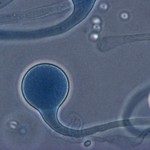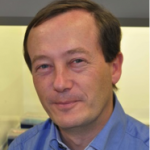Link to Pubmed [PMID] – 20625156
Antimicrob. Agents Chemother. 2010 Oct;54(10):4446-50
The outcomes for 73 invasive fusariosis patients treated with voriconazole were investigated. Patients with proven (n = 67) or probable (n = 6) infections were identified from the voriconazole clinical database (n = 39) and the French National Reference Center for Mycoses and Antifungals database (n = 34). Investigator-determined success was a complete or partial response. Survival was determined from day 1 of voriconazole therapy to the last day known alive. Patients were 2 to 79 years old (median, 43 years), and 66% were male. Identified Fusarium species (62%) were F. solani, F. moniliforme, F. proliferatum, and F. oxysporum. Underlying conditions analyzed included hematopoietic stem cell transplant (HSCT; 18%), hematologic malignancy (HM; 60%), chronic immunosuppression (CI; 12%), or other condition (OC; 10%). Infection sites were brain (5%), disseminated excluding brain (67%), lungs/sinus (15%), and other (12%). Most patients (64%) were or had recently been neutropenic ( 0.05). Combination therapy (13 patients) was no better than treatment with voriconazole alone. Overall, 59% of the patients died (49% died of fusariosis), and 90-day survival was 42%. Site of infection influenced survival (P = 0.02). Median survival (in days) by species was as follows: F. solani, 213; F. oxysporum, 112; Fusarium spp., 101; F. proliferatum, 84; F. moniliforme, 76. We conclude that voriconazole is a therapeutic option for invasive fusariosis.


